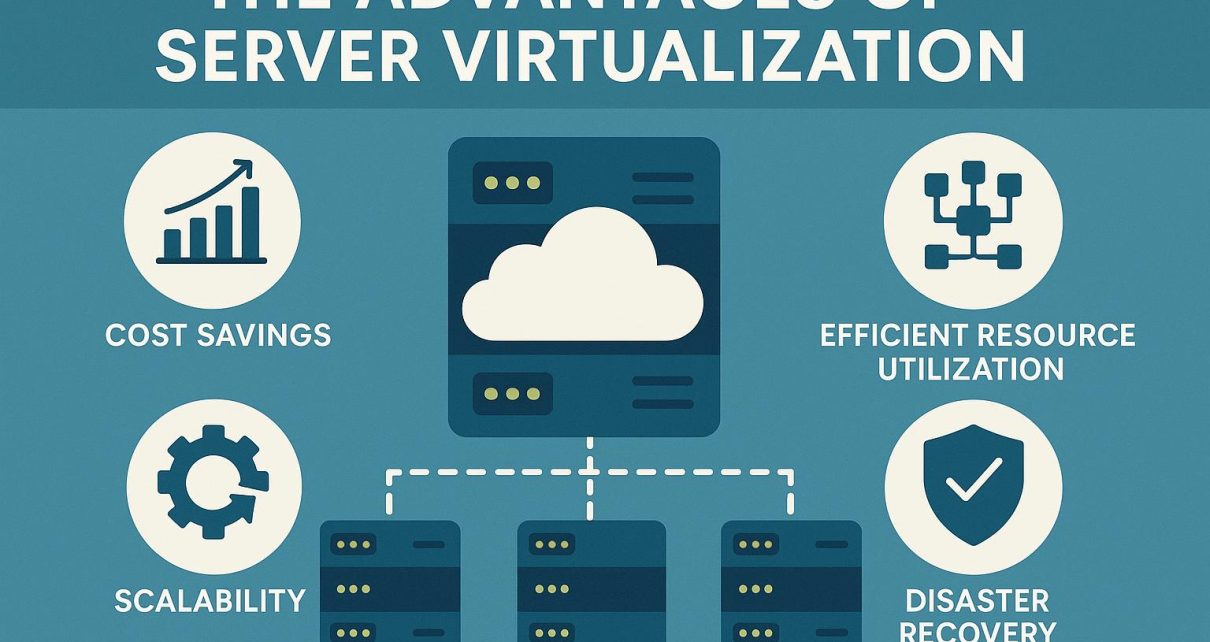Introduction to Server Virtualization
Server virtualization is a technology that has significantly transformed the IT landscape over the past few decades. It involves dividing a physical server into multiple virtual servers using a software layer known as a hypervisor. Each of these virtual servers operates independently, equipped with its own operating system and applications. This innovative technique offers numerous advantages that are essential for businesses aiming to enhance and modernize their IT infrastructure.
Cost Efficiency
One of the most apparent benefits of server virtualization is the reduction in infrastructure costs. Traditionally, businesses needed to purchase and maintain a separate physical server for each application or service they intended to run. By consolidating multiple physical servers into fewer machines or even a single machine, organizations can significantly cut down on their hardware expenses. This not only reduces the initial capital required for purchasing servers but also leads to long-term savings on maintenance and upgrades. Furthermore, with a minimized number of physical servers, there is a marked decrease in energy usage and operational costs, as fewer machines require power and cooling. Environmental sustainability is an added advantage, supporting businesses’ efforts towards greener operations.
Optimized Resource Utilization
By enabling multiple virtual servers to share the resources of a single physical server, server virtualization maximizes resource utilization. Traditional server environments often faced challenges of under-utilization, where CPU power, memory, and storage capacities were not fully harnessed. Virtualization, on the other hand, allows businesses to dynamically allocate these resources according to the demands of diverse applications and workloads. This ensures that available resources are used efficiently, leading to better performance and minimizing waste. Organizations can balance loads more effectively, ensuring that all applications receive the computational resources they require to function optimally.
Scalability and Flexibility
Server virtualization is invaluable for its ability to offer unparalleled scalability and flexibility. Businesses can create new virtual servers on demand, without the necessity of procuring additional hardware. This feature is particularly beneficial for businesses experiencing rapid growth or fluctuating demands, as it allows them to scale up or down efficiently. The ability to quickly adapt to market changes ensures that businesses remain competitive and responsive to new opportunities. Furthermore, server virtualization is compatible with a variety of operating systems and applications, supporting seamless integration with different virtualization platforms. This adaptability ensures that businesses can choose the best tools and environments suited to their specific needs.
Improved Disaster Recovery
The improved disaster recovery capabilities provided by virtualization are crucial for maintaining business continuity. Virtualization technologies offer features like live migration and snapshots, facilitating fast and reliable recovery processes. Virtual machines can be easily backed up and restored, offering a consistent level of data protection and allowing quick recovery in the event of system failures. Moreover, virtualization supports data replication to offsite locations, ensuring that critical information remains available even in the aftermath of a local disaster. This not only safeguards the company’s data but also helps in minimizing downtime and associated losses, maintaining trust among clients and stakeholders.
Enhanced Testing and Development
Server virtualization provides an ideal environment for software testing and development. Developers can establish isolated test environments that do not interfere with production systems, enabling concurrent testing activities without the risk of disrupting ongoing business operations. The ability to quickly set up, clone, or remove virtual machines facilitates rapid testing cycles, enhancing the efficiency of the software development and deployment processes. This flexibility is particularly beneficial in iterative development methodologies like Agile, where frequent testing and iteration are essential.
Increased Security
Security remains a paramount concern in any IT setup, and virtualization plays a significant role in enhancing security measures. Virtual environments offer advanced security features such as sandboxing, which isolates applications and services to avert the spread of potential security breaches. By employing sophisticated security tools tailored for virtual environments, organizations can effectively safeguard sensitive information. These environments allow for segmented networks, providing an additional layer of defense against cyber threats and unauthorized access.
In conclusion, server virtualization brings forth a plethora of advantages that are instrumental in transforming IT operations. By enhancing resource usage, offering greater scalability, and improving disaster recovery processes, virtualization stands as an indispensable technology for modern businesses. Its potential to reduce costs while also boosting security measures makes it a strategic investment for organizations looking to optimize their IT infrastructure. As businesses continue to evolve and face dynamic challenges, server virtualization provides the flexibility and agility necessary to adapt and thrive in the digital era.




